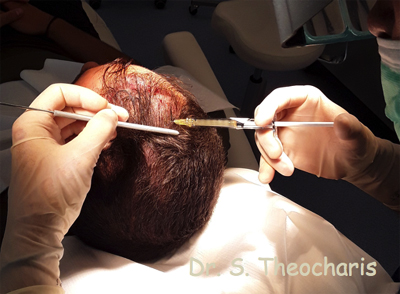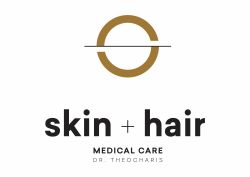Αυτόλογη μεσοθεραπεία PRP

Among the methods for reducing hair loss, autologous mesotherapy (PRP – plasma rich platelet) is used frequently, nowadays.
The therapy has multiple benefits to the skin and scalp as well as the multiple areas it can be applied.
F0r the face, neck, body and finally the scalp, this method is known as one of the most effective and reliable treatments.
Autologous mesotherapy (PRP) therapy is applied through multiple injections, like the heterologous mesotherapy. The distinguished difference between them is that in the second option vitamins, amino acids, hyalouronic, are injected into the skin. While in the PRP autologous mesotherapy, platelet rich plasma is injected into the skin. Plasma constitutes 55% of total blood volume, it contains red & white blood cells, platelets, proteins, various nutrients, vitamins, electrolytes, etc.
Generally, functional properties of PRP are mainly based on the synthesis and secretion of multiple growth factors that are secreted after platelet activation.
What does the abbreviation PRP stand for and what are the growth factors?
The term is derived from the initials of the words Platelet Rich Plasma, which means plasma enriched with blood platelets.
Basically, it is blood plasma which, after specific processing, produces a platelet concentration of 2–6 times higher than native plasma.
Usually blood platelet concentration is 150,000 - 350,000 per mm3 (mean: 200,000 / mm3).
However, PRP contains around 1,000,000 platelets per mm3. Platelets are involved in the coagulation process and contain, among others, growth factors and cytokines which influence the inflammatory process, as well as tissue and cell regeneration.
Growth factors are specific proteins that are released by various cells of our body (such as platelets) and help to repair malfunctioning or damaged tissues by developing regeneration.
How is PRP autologous mesotherapy performed and in which way are the growth factors released?

The process is relatively simple. Basically, patient’s blood is collected and centrifuged at varying speeds until it separates into 3 layers: platelet poor plasma (PPP), PRP, and red blood cells. Usually 2 spins are used.
The first spin (“Hard spin”) isolates the platelet rich plasma with an average speed of 3500 / min for 10 minutes to concentrate the platelets in a small volume.
The physician will then decide on the amount of PRP that will be required for the operation to be performed, and in every case sterile conditions should be strictly applied to avoid contamination.
For successful PRP therapy, it is vital to use machines that are FDA certified and approved.
The second spin (“Soft spin”) separates the red fraction from the PRP. The material with the highest specific gravity (PRP) will be deposited at the bottom of the tube. Immediately prior to application, a platelet activator/agonist (thrombin and calcium chloride) is added to activate the growth factor, producing a platelet gel. The use of these activators requires medical supervision to prevent cardiac arrhythmias and thrombosis
The patient needs to be fully informed about the realistic expectations of the therapy outcome before proceeding to PRP, as there is still controversy regarding the therapeutic contribution of the treatment.
What is the concentration of platelets for every case what is the ideal centrifuge, and if an activator should be used?
Those are the most common questions that raise concerns, so make sure to check with your dermatologist and discuss the above parameters for your specific case and need.
What are the indications for PRP therapy?
PRP is therapeutically used for:
- Deep Hydration and Facial reconstruction by stimulating fibroblasts and producing collagen
- Improvement of acne scars and stretch marks in combination with fractional laser treatments.
- Improvement of skin firmness, elasticity and radiance
- Skin aging prevention
- Hair quality improvement in patients with history of androgenetic alopecia (AA)
- PPR is also a supportive therapy after hair transplantation as it stimulates angiogenesis, which increases the vascular system and gives "nourishment" and oxygen to the hair cells, while also speeding up the healing process.
After hair transplantation surgery, the autologous mesotherapy PRP may be applied to both the recipient and the donor area.
In our dermatology clinic, Skin and Hair Transplant, Dr. Sotiris Theocharis performs PRP hair loss treatment, as well as all other medical services, by following strict application protocols.
Our 25 years of clinical experience in hair transplantation, combined with our highly trained medical and paramedical staff, are a strong warranty for restoring androgenetic alopecia (of all types) and treating scalp diseases, achieving successful and natural looking results.
For the hair transplantations, we use the two basic techniques of FUE or FUT (STRIP) methods, or a combination of the two, depending on the needs of each patient.


